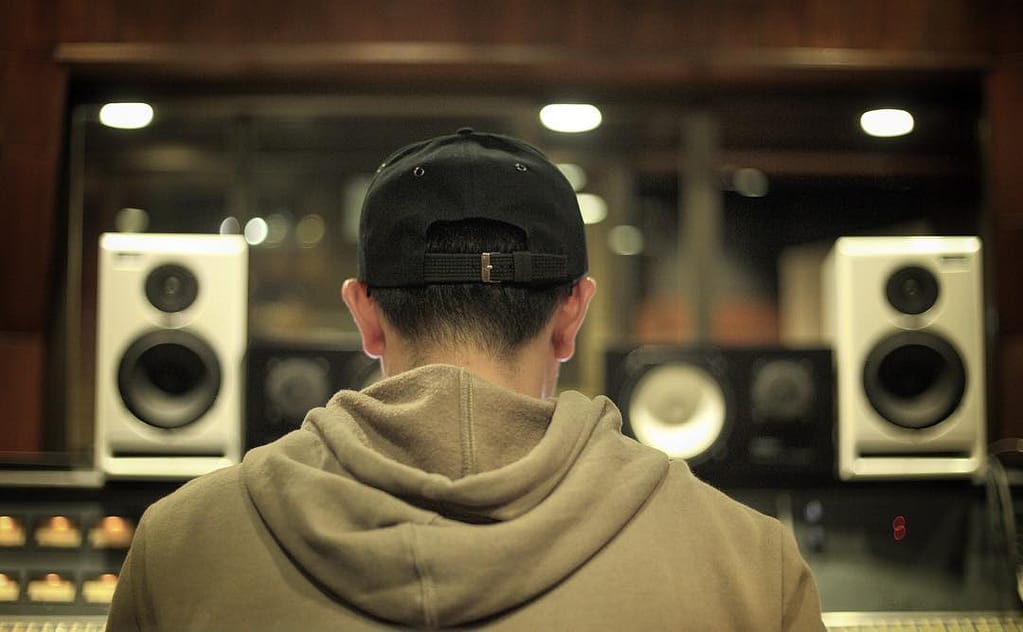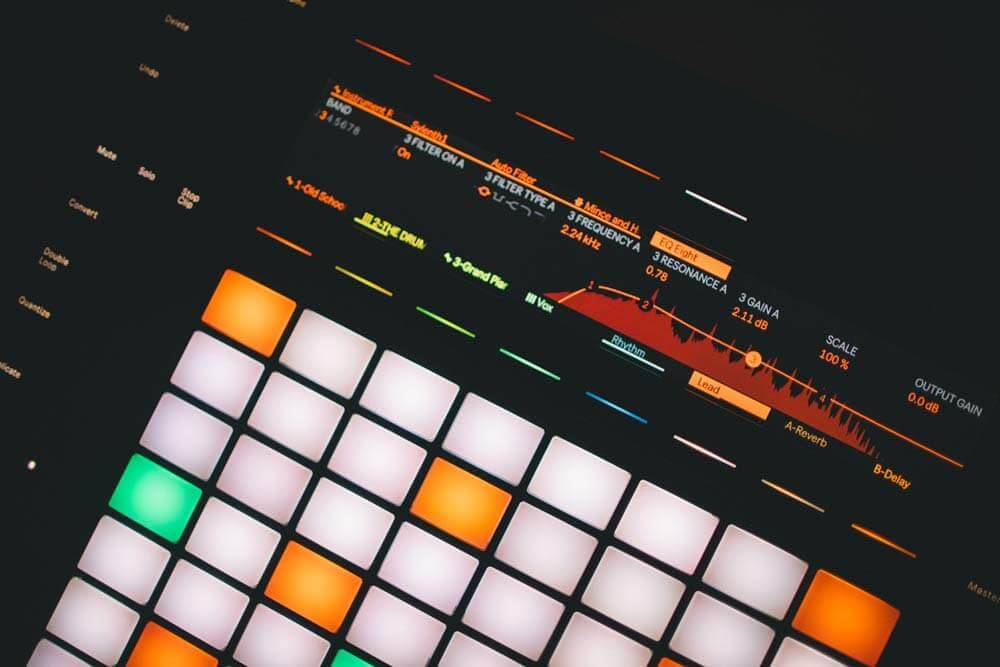BY MATT SIM
There’s plenty of information out there online for producers and engineers about audio mixing. But the majority of them are quite misleading. Like everyone else, I used to go through all the magazines, blogs, articles and youtube videos when I was young, trying to pick up all the “tricks” I can get from professionals. I realized I only know half of the story after I started working in the big recording studios.
There are a few misconceptions by producers and engineers that I observed throughout the years. I have made those mistakes also, and I hope you can learn from my experiences!

Speaker stands & Acoustic treatments
monitor stands
A lot of people overlooked the importance of the monitor stand while they complained about how their speaker sounds and how their room has terrible acoustic. The result is a lot of them end up losing a lot of money changing studio monitors frequently, or spending a lot on acoustic treatments. Even myself has made that mistake before, when I was younger. I hope you won’t make the same mistakes again.
You should try upgrading your speaker stand to something like Sound Anchor, Argosy, etc. that professional studios use. They are really heavy thus won’t resonate with the speaker easily and will decouple your speaker from the floor very well. Feel free to add an isolation pad in between the stand and the speaker.
An alternative option is to have a very well built and heavy studio desk, it will give you a similar result. With a good monitor stand, the low end of the speakers will be very focused and tight and you’ll have a better overall frequency response from the monitors. Once you have a good speaker placement then you can add acoustic treatment to taste, it could save you thousands of dollars chasing for the perfect sounding monitor and doing unnecessary acoustic treatments.
distance between a pair of speakers
Another thing people tend to overlook is the distance between a pair of speakers. There’s a reason why speakers are categorized into nearfield, midfield and mains. You shouldn’t place a pair of nearfield speakers super wide, you will lose a lot of low ends because it wasn’t designed to use it that way. The closer you put the speakers, the more low end you ‘ll get. Depending on your setup, you should choose the correct category of speakers based on the distance between them, nearfield for narrowest placement, mains for the broadest placement.
Parallel Processing
While everyone is hyping about parallel processing, not everyone is executing it correctly. We all know there’s plenty of advantages using parallel audio mixing/processing, those are true if used methodically and carefully. If you are using parallel processing in the analog domain, you are set, you don’t have to worry about anything. But if you use it in the digital domain like me, there are few things you will have to consider and pay attention to.
- Pay attention to the delay compensation and latency issues between the dry signal and parallel signal. The computer often gives an incorrect delay compensation for plugins, therefore it will cause a slightly out of phase and alignment problem between the dry and parallel signal. I would recommend trying a few plugins on the parallel chain and see what is working accurately without causing phase issues.
- Make sure you are using linear phase EQ!!!
- I would recommend using plugins with mix knob (dry/wet) to create a similar parallel processing effect.

Issues with layering drum samples
I bet everyone loves layering drum samples. It’s definitely fun and cool. But often I receive sessions with multiple drums layered and it sounds terrible!! The reason why is because most often producers and engineers can’t hear what’s going on with their monitoring system.
I’d recommend everyone to check on their headphones and multiple speakers and see what actually happens when you are layering the samples. Sometimes, they are out of phase; sometimes, their pitch is different…many things can go wrong when you layer something.
The best solution to this is to spend time and find the perfect samples! The second-best solution to this is to check the phase correlation every time you add a sample and perhaps use a linear phase EQ to isolate the part of the sample you want to use. E.g. If the original kick sample has no 200hz, and you want to layer another kick sample for 200hz, just to EQ out the 200hz on the new sample, then check the phase correlation to the original kick sample.
Respect the rough/reference/producer mix!
Rough mix sucks all the time, oftentimes we tend to ignore it because they really suck. However, 9 out of 10 mixes I survived and finished the job because of the rough mix. Unless you are Jaycen Joshua or other 10 mixers in the world, then sure you can say “Fxxk the rough” LOL, why not.
I don’t necessarily follow the rough mix 100% because I still have to do my job and make my mix sounding better than the rough mix. Here’s how I use the rough mix. it tells us a few clues about your client’s preference:
- Their mix tells you what their listening environment/taste is like, you might have to follow their overall brightness or darkness in terms of EQ to please them. Unfortunately, sometimes it is something really off….but it is what it is to finish a job and move on. No point to fight the impossible.
- Their preference in terms of balance and panning. Stick to that or you have a better idea then feel free to try them out.
- Sometimes the editing or sync is wrong! The rough mix is your guide to fix them if possible.
- If there’s special effects/processing in the rough mix, you might have to redo it in your mix also. If it’s impossible to replicate that, you should reach out to the client and ask for help.
- A rough mix is a great communication tool between you and the client. Sometimes it’s hard to understand certain emotions in the music. The rough mix is there to provide you the clue, why the client wants it a certain way. It’s always easiest for the client to tell you “I like how my vocals sound in the mix, can you do that also in your mix?”.
5. Stop mixing with fancy tricks that you learned from Pensado’s place and other advanced tutorials online.
I love Pensado’s place and every guest on it, it’s super resourceful. However, those tricks we learned from the show are sometimes too advanced to most of the junior engineers and producers that have no solid foundation in engineering or audio mixing. It’s like you start running before you can even walk.
I have engineers coming up to me showing me their mixes for critique. Most of them sound better without any processing on it as a matter of fact. They spent a lot of time and energy applying all the fancy tricks that they know instead of focusing on the basics of mixing, which is balance and panning.
They all have some fancy tricks that they use which is cool but they don’t know how to use it and why it was used that way. At the end of the day, no one cares about your audio mixing tricks, they only care if the overall mix sounds good by whatever means. If you can get a dope mix on GarageBand, people will hire you! Masters who invented those tricks have years of basic training and practice before they implement those tricks to their arsenal.
Word of advice, try to mix as simple as possible with EQ and compression and get good mixes consistently before you start using all the fancy tricks! Save those for later until you have mastered your skillset. I was trained in the analog domain before I transitioned to the digital. Things are a lot simpler in the analog domain. Have your mindset that way and you will achieve quicker and better sounding mixes.
More about Matthew Sim: https://www.mixbymattsim.com/
For more mixing tips, check our other articles!







Leave A Comment
You must be logged in to post a comment.